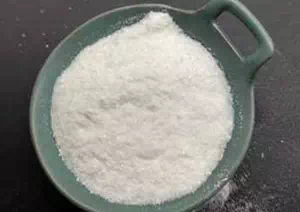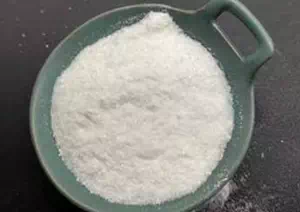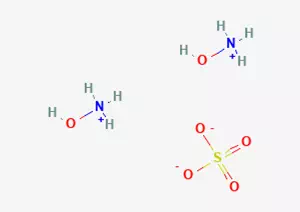All Categories



Hydroxylamine Sulfate CAS 10039-54-0, Hydroxylamine Sulfate, CAS 10039-54-0
Hydroxylamine sulfate (CAS 10039-54-0) is a highly active reducing agent and synthetic intermediate, widely used in the pharmaceutical, pesticide and materials industries.
CAS : 10039-54-0
Formula : H8N2O6S
Mol. wt. : 164.14–164.15 g/mol
EINECS : 233-118-8
| CAS | 10039-54-0 |
| Molecular formula | H8N2O6S |
| Molecular weight | 164.14–164.15 g/mol |
| EIENCS | 233-118-8 |
| Form | crystalline powder |
| Melting point | 170–172 ℃ |
| boling point | 56.5℃ |
| Density | 1.86 g/cm³(25℃) |
| Solubility | Readily soluble in water (329 g/L, 20℃) |
| PKA | / |
| Color | colorless or white |
| Storage temp |
Hydroxylamine sulfate (CAS 10039-54-0) is a highly active reducing agent and synthetic intermediate, widely used in the pharmaceutical, pesticide and materials industries. However, its strong corrosiveness, toxicity and environmental risks need to be strictly controlled. Core operating principles: Airtight protection, heat and moisture avoidance, and no contact with oxidants.
Industrial and Synthetic Chemistry
Reducing agent: It is used for the reduction of metal compounds such as gold, silver and mercury
Organic synthesis: Synthesis of oxime, hydroxamic acid (Intermediate for pesticides/pharmaceuticals)
Rubber industry: As a vulcanizing agent to improve rubber performance
Professional field
Pharmaceuticals: Production of antibiotics (such as vitamin B₁₂) and anti-tumor drugs
Agriculture: Manufacturing insecticides (Methomil) and herbicides
Water treatment: High-efficiency dechlorinating agent
Analytical reagents: Selenium determination, developer (photographic development)
Health hazard
Acute toxicity: Oral LD₅₀ in rats was 842 mg/kg, which was moderately toxic (harmful to swallowing).
Irritation: Corrosive to skin and eyes, contact may cause allergic reactions (R43)
Special toxicity: Long-term exposure may cause methemoglobinemia and neurological damage
Environmental risk
Aquatic toxicity: Highly toxic to aquatic organisms (R50), environmental release should be avoided
Protective measures
Operating requirements: Enclosed environment + local exhaust ventilation. Wear dust masks, acid and alkali resistant gloves and goggles
Leakage handling: Cover with plastic sheeting and collect. Do not rinse with water
* Prompt reply and 24 hours online, professional team to provide best price and high quality product.
* Sample testing support.
* Every batch of products will be tested to ensureits quality.
*The packing also can be according the customers` requirment.
*Any inquiries will be replied within 24 hours.
*we provide Commerical Invoice, Packing List, Bill of loading, COA , Health certificate and Origin certificate. If your markets have any special requirements, let us know.